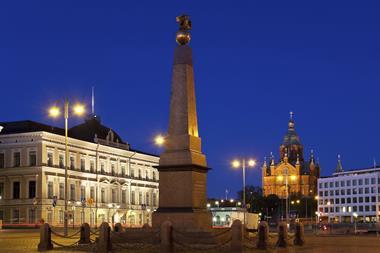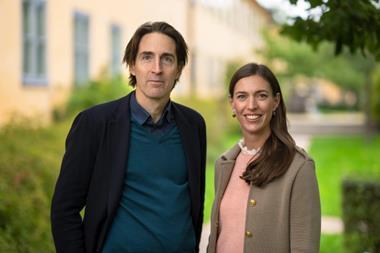Russia has long generated sharply contrasting responses from potential investors. On the one hand they are attracted by the clear wealth and potential of the economy. On the other hand, they are concerned by creeping authoritarianism, an opaque and occasionally corrupt bureaucracy, the reliance of the economy on external demand and natural resources and an increasingly ambivalent attitude to property rights.
Real estate investors are faced by similar challenges. The scale and wealth of the country and economy, the size and potential of the capital city, demand for additional quality office, retail and logistics space, combine to entice them. However, risks associated with the economy, property rights and the potential for a substantial correction in rental values, highlight the need for caution.
Ultimately, investors’ approaches to Russian real estate will be determined by answers to the following questions:
q Is the economy becoming less dependent on natural resources and external demand?
q Do recent political developments question the transformation of Russia to a western democracy?
q Can the opportunities and risks presented by Russian real estate be accurately priced?
q Is the risk of a rental correction offset by a likely reduction in the risk premium required by investors?
Russian real economic growth since the 1998 financial crisis has consistently exceeded expectations, with average growth of 3.6% over consensus estimates. Although the service sector has grown in importance (accounting for a third of growth in 2003), industrial production based on natural resources remains the mainstay of the economy. GDP growth of between 5% and 6% pa is expected over the next five years.
In addition to a strong and stable economic outlook, most investors seek clear property rights and a stable, preferably democratic, political framework. Initially, the clear direction provided by President Vladimir Putin was welcomed but recent events such as Yukos and the political changes introduced following the Beslan massacre have fuelled fears of creeping authoritarianism, which may endanger property rights and the economic outlook. Investors, therefore, need to judge whether Putin’s actions are benevolent or malevolent. There are arguments both ways. For example, his treatment of Yukos could be viewed as an attempt to concentrate power in the state or correct a clearly inequitable allocation of Russia’s natural resources. If the optimists are right, and Putin is merely accumulating power to nurture democracy and correct the mistakes of the past, then strong economic performance is likely to continue. If not, foreign investment and economic growth are likely to decline.
Russian property markets are currently characterised by undersupply. At the end of 2003 Moscow’s modern office stock totalled almost 2.9m2, of which less than 25% was class A. This compares with over 45m2 in the Ile de France and just less than 17m2 in Berlin. Our calculations suggest that, over the medium term, Moscow’s office market could expand to more than 15m2. Over the last few years, office development has been substantial, comfortably exceeding 10% of stock between 1999 and 2003. However, demand from the expanding services and natural resources sectors has led to take-up in excess of new supply, and low vacancy (probably less than 5%).
At $550-600 /m2 annually, headline rents for prime office space are virtually identical to current headline rents for prime City of London and Paris CBD, double those in Frankfurt and Madrid, and more than three times those in Warsaw and Prague.
As a result it is reasonable to presume that current rents are excessive. The combination of limited supply, rapid development and high rents is similar to the position in Warsaw, Prague and Budapest in the early 1990s. In each market, excessive development was followed by a substantial rental correction. However, the combination of a relatively positive economic outlook with substantial undersupply means that a similar correction in Moscow appears unlikely, at least over the short to medium term.
As with the office sector, Moscow’s retail market is benefiting from strong demand, primarily as a result of robust annual income growth. In addition, despite substantial development activity, retail provision remains low. At the end of 2003 total shopping centre stock was around 789,000m2, which is only slightly more than Milan and less than Warsaw, Berlin and Madrid.
Although the majority of retailers are local, international chains are becoming more active. In addition, rental values remain broadly sensible. After falling following the 1998 crisis, prime retail rents have stabilised at around $3,000/m2 annually for a standard 100m2 high street shop, shopping centre rents are slightly lower at around $2,250/m2 annually. Although expensive compared to Madrid and Milan, rents are similar to Berlin and lower than Paris or London.
Given the economic outlook, the low supply and clear scope for greater growth in retail spending than the economy as a whole, a positive view of Moscow retail is reasonable.
Moscow’s logistics market is still in its infancy. Current stock is around 1.6m2, of which only around 250,000m2 is of institutional quality. To put this in context King Sturge estimates the logistics stock in the Ile de France and Greater London at 55m2 and 25m2 respectively. Limited supply is reflected in rental levels which, at just under $150/m2 annually, are higher than Paris, Berlin, Warsaw, Madrid, Frankfurt and Amsterdam.
In part, limited stock can be explained by developer caution, which remains a problem (although interest appears to be growing). Although rents are likely to fall at some point, the outlook is similar to that for the office sector. Without substantial supply side expansion it is difficult to see a rental correction over the short term. In Central and Eastern Europe the office rental correction experienced over the last five years has been offset by a gradual but sustained reduction in yields. As a result, capital values were supported as rental income declined. Will Moscow be similar?
Compared to other European markets, yields available in Moscow look generous. Office yields range from 13-14% for
the best quality product. Retail yields range from 14-16%.
Logistics yields are difficult to estimate, but are probably higher than the other two sectors. In central Europe yields for all three sectors are below 10%, as a result, a substantial ‘Russian premium’ remains.
Arguably, a proportion of this premium can be explained by currency risk. Although most rental contracts are denominated in hard currency, capital values are only partially proofed against currency movements, as reversionary income streams remain liable to inflation differences over the lease term. However, the gradual reduction of Russian inflation suggests greater currency stability, which minimises this risk.
Investors should also require a premium for differential bond yields. However, fiscal responsibility is gradually reducing the cost of Russian government debt as the risk of default reduces. Finally, part of the premium is explained by the immaturity and illiquidity of Russia’s investment market. However, as momentum builds, transparency will follow and yields should fall.
However, this optimistic perspective is inextricably linked to the political outlook. If President Putin maintains his current economic course and tries to address fears associated with creeping autocracy, the investment outlook looks positive. If he doesn’t, yields might rise and, as foreign capital flows reduce, rents could fall. On balance the opportunity seems greater than the risk.
Guy Barker is head of fund management and Dr Paul Kennedy is head of European Research for Invesco Real Estate













No comments yet